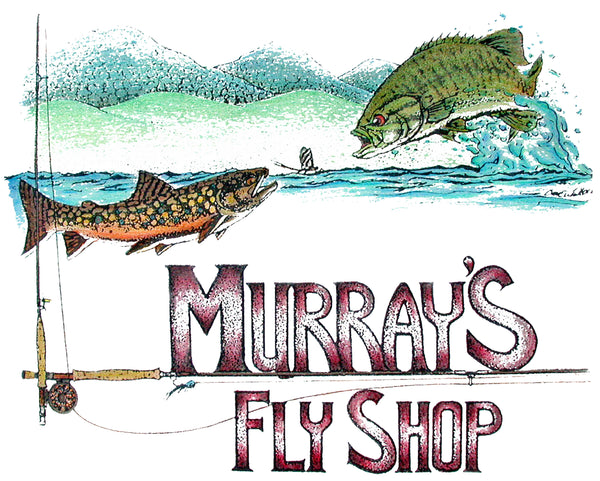Fishing Terrestrials on Spring Creeks

Fly Fishing Terrestrial Insects for Spring Creek Trout.
First let's define terrestrials as land born insects such as ants, beetles, crickets and hoppers.
Every year I find that I fish more terrestrial fly patterns on spring creeks than I did the year before. The reason is very simple… they seldom let me down.
In order to be consistently successful in your own spring creek fly fishing with these patterns let us examine the fly patterns and tactics in a seasonal sequence.
Many natural black ants can be seen along these streams as early as May. Even though there are aquatic insect hatches present at this time they are often present at specific times of the day and even then some trout will quickly go for your Ants. This point came across to me one day when I had a beginning angler fishing with me.
A very large rainbow trout was feeding on Beatis mayfly duns along the far side of the stream below a willow tree. My friends dry Beatis did not interest him. He put on a size 16 Mr. Rapidan Black Ant but his cast fell six feet short of the trout. Much to our surprise that big rainbow swam over and took his Ant on the first drift. That was just the first of many large trout he took that day on the Mr. Rapidan Black Ant.
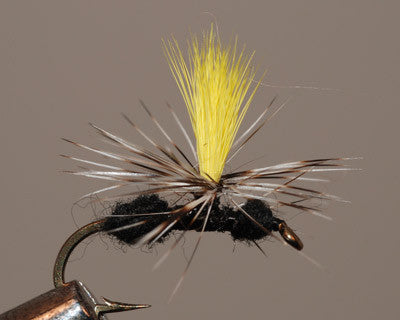
Mr. Rapidan Ant
The delicate inchworms you see hanging form their fine threads over the stream can often be seen early in the summer but other worm-like terrestrials are present all season and the Murray’s Dry Inchworm size 14 will fool many trout. A variety of presentations are effective with Inchworms. For example, one friend likes to present his with a splash while I prefer a dead drift. And there was the day my fishing partner, Willie Downey, accidentally allowed his Inchworm hanging from the leader below the fly rod to bounce along the stream surface beside an undercut bank as he rested beside the stream. A huge brown took it solidly. Later, mimicking this bouncing fly action with his Inchworm Willie took four more large browns.
Natural beetles are present in large numbers along spring creeks from June until November. Some anglers think of these just as Japanese beetles but an entomologist friend recently told me that there are over 200 beetle-type insects along our streams.
I often start using the Murray’s Flying Beetle size 14 in May, going down to size 16 by July and to size 18 in August and September. These are very effective to use in just covering the water, but there are several other special situations in which I find them outstanding.
One of these is what I call a “hatch closer”. That is, when a hatch such as tricos or beatis are tapering off for the day there are often some large trout still holding on feeding stations, apparently wanting a little more to eat. These trout were very selective during the heavy part of the hatch but now when you drift a Flying Beetle over them they often take it quickly.
A second trick I use with the Flying Beetle is on that tough trout which is willing to come up at look at every fly you show him but refuses them all. Here I use my Flying Beetle to “hit him on the tail”. That is, I mark his feeding station very carefully and when he comes up to take a natural I cast my Flying Beetle with extra snap so it lands loudly even with his tail but a foot to the side. In many cases he will turn and nail my Beetle.
Sometimes our spring creeks receive very heavy fishing pressure by many excellent anglers. These trout see great numbers of standard fly patterns so I have found that if I can trick them with a different fly which presents an entirely different “light pattern” I can catch many of them. Naturally this means showing them a fly which matches a natural food they feed upon. This was why I developed the Murray’s Housefly. This fly in size 14 is unbelievably productive on spring creeks and there is no wrong way to fish it.
Ed Shenk’s Cricket in sizes 10 down to 16 is definitely one of my favorite spring creek flies for both Eastern and Western streams.
Natural crickets are early risers so the Shenk’s Cricket is an excellent fly to use when you get to the stream in the morning. Fish these along the shaded undercut banks and over the deep runs beside the grassbeds.
For some, almost magical, reason large brown trout can hardly resist swinging up to investigate Ed’s Cricket. Many of them take it solidly. If, however, they turn away refusing it they have still revealed their feeding station. For this reason I have always referred to Ed’s Cricket as the best “fish finder” we have. Now that you know the trout’s feeding station you can drop back to a size 18 Mr. Rapidan Ant and he will often take it.
Shenk’s Cricket is often very successful for me as I travel to other parts of the country to fish spring creeks because many anglers in those areas do not use Crickets as much as we do here in the East. For example, one afternoon on a Montana spring creek I was catching many trout on Ed’s Cricket by using a slow kicking action with it along some deeply undercut banks. A local angler waded down to me and politely inquired, “Are you catching those trout on streamers?” He was very surprised when I gave him some of Ed’s Crickets to try.
Shenk’s Cricket is definitely one of the top selling flies in the fly shop.
Natural grasshoppers are large enough by July to attract large trout. Some of the most productive areas are where the streams swing beside pasture fields and hay fields. My favorite hopper pattern is Ed Shenk’s Letort Hopper in sizes 10 down to 16.

On some days an upstream dead drift presentation is the best tactic. Other days a slight twitching action to mimic the kicking motion a real grasshopper brings the most strikes, so be willing to experiment. The trout feed heavily upon the real grasshoppers whenever they fall into the stream so stay alert for this.
For example, one hot August afternoon strong western winds that accompanied a rough looking thunderstorm moved in on the spring creek I was fishing. The rain passed quickly but the heavy winds kept up for two hours, pushing great numbers of natural grasshoppers onto the stream. As far as I could see both upstream and downstream the trout were feeding heavily on these hoppers. I put on a size 10 Shenk’s Letort Hopper and caught many large trout.
If you would like some very exciting spring creek fly fishing this year I strongly suggest you try terrestrial fly patterns to match the naturals which are present along the streams.
-
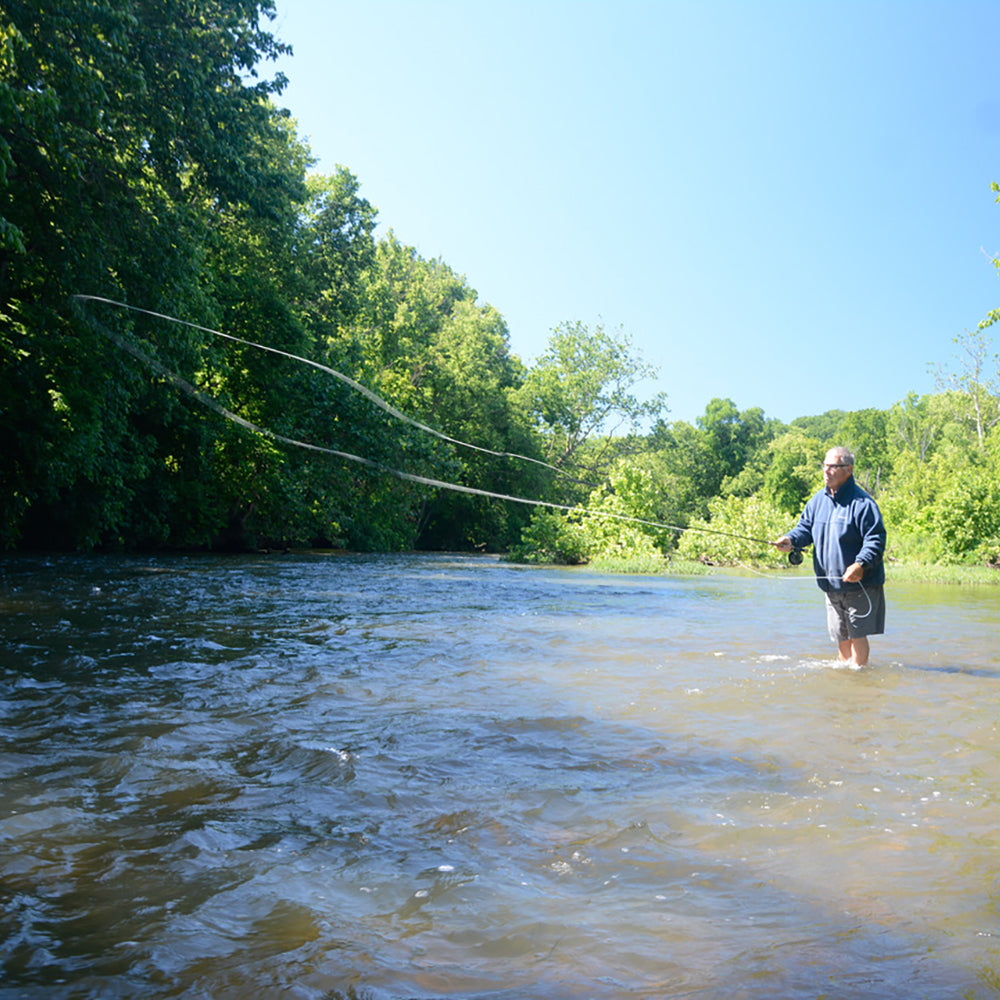
Learn Fly Fishing at Murray’s Fly Shop: Classes, Workshops & Schools
Welcome to Murray’s Fly Shop – Your Fly Fishing Learning Hub At...
-
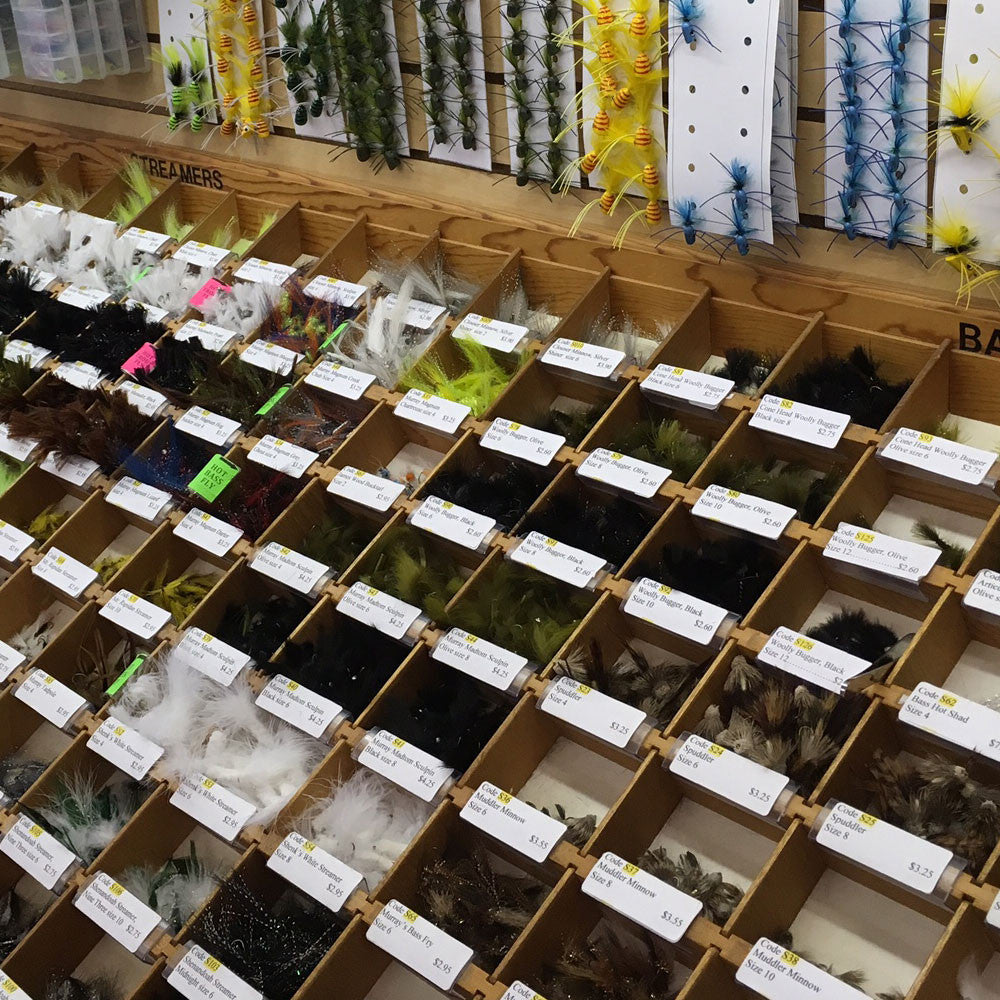
Featured Flies of the Month
Harry Murray's recommended fly list for this time of the year. (March...
-
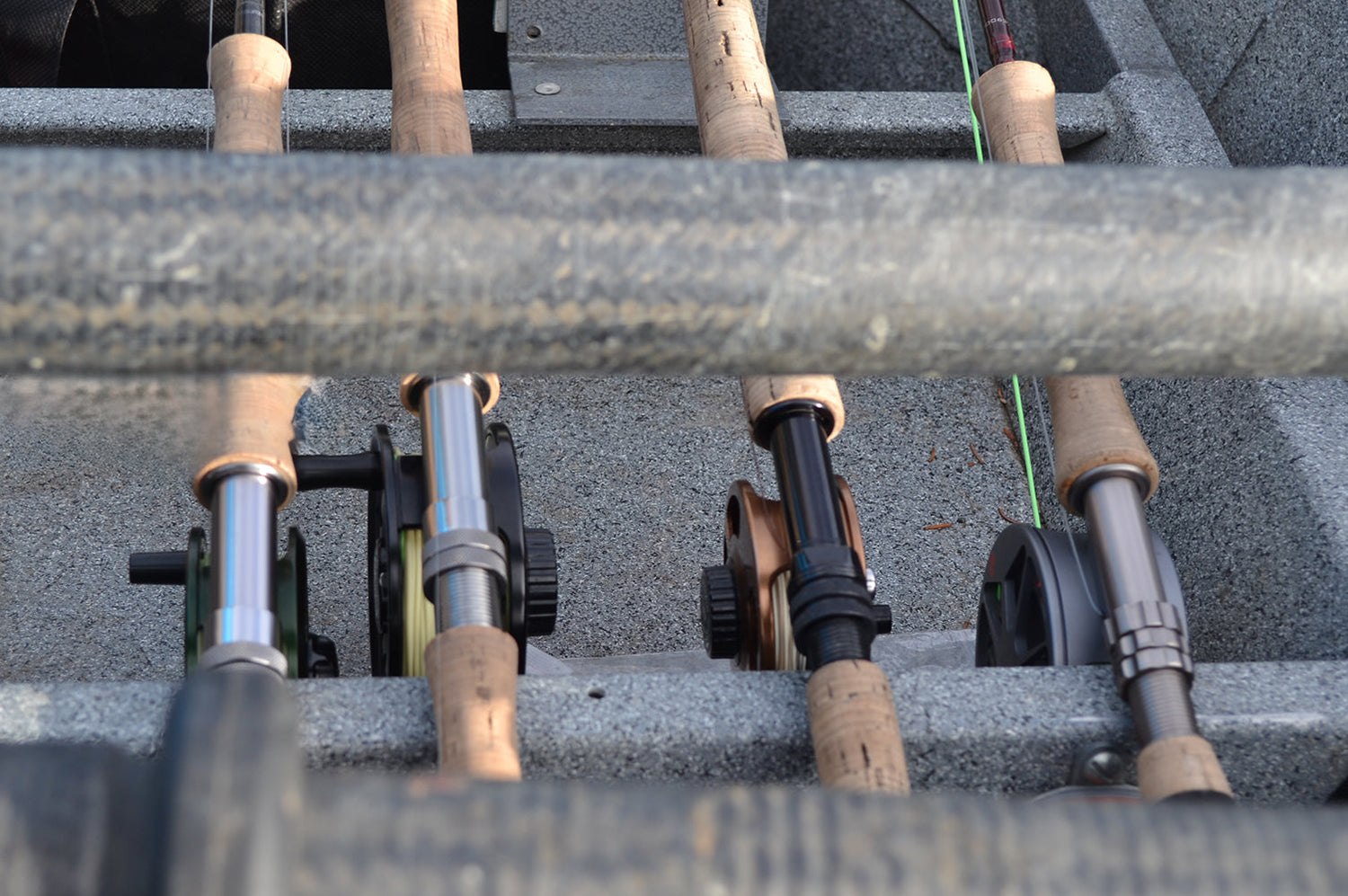
Fly Fishing Rod Outfits
Fly Fishing Rod and Reel Outfits for Smallmouth Bass fly fishing, Trout...
